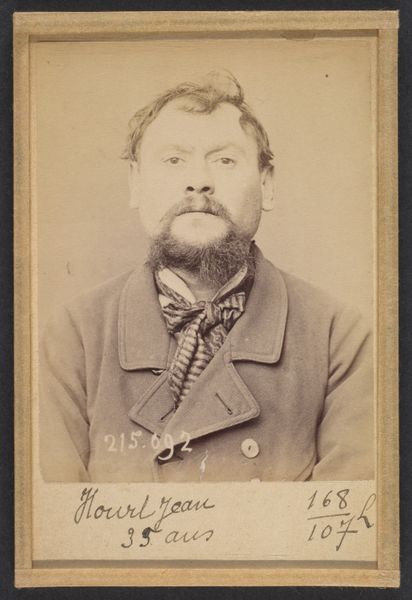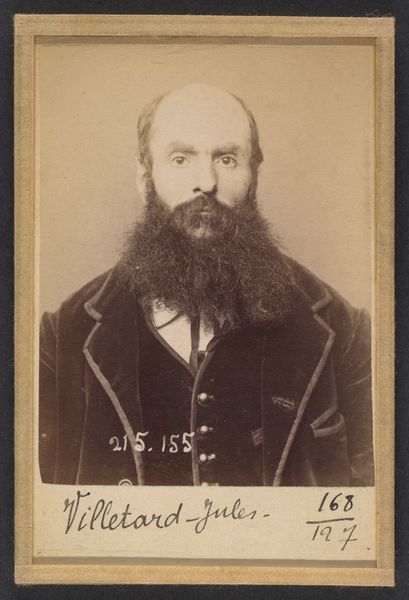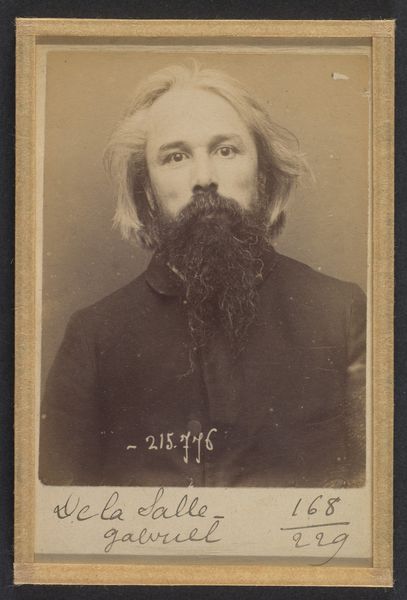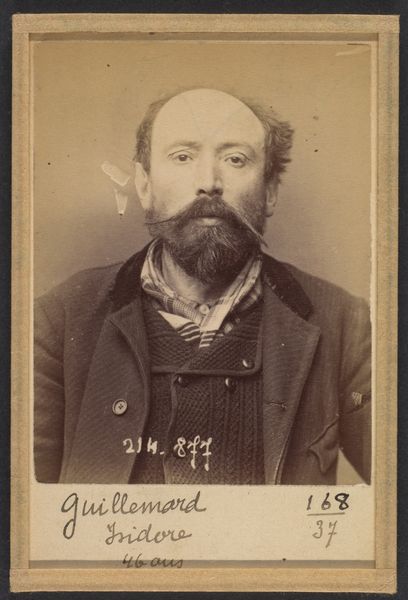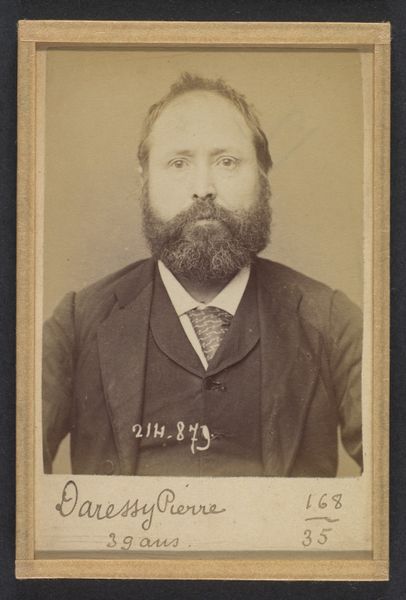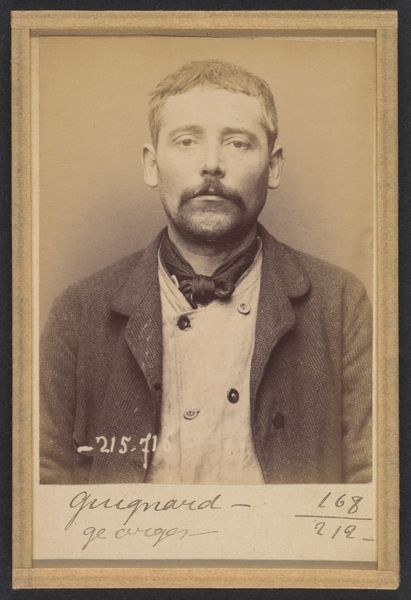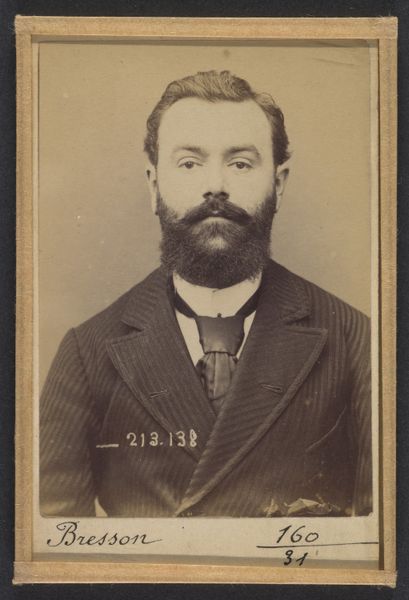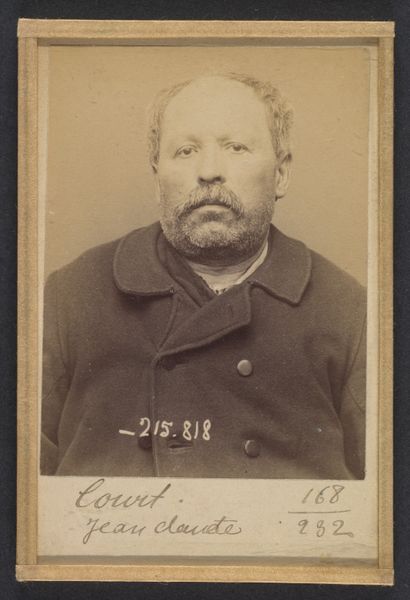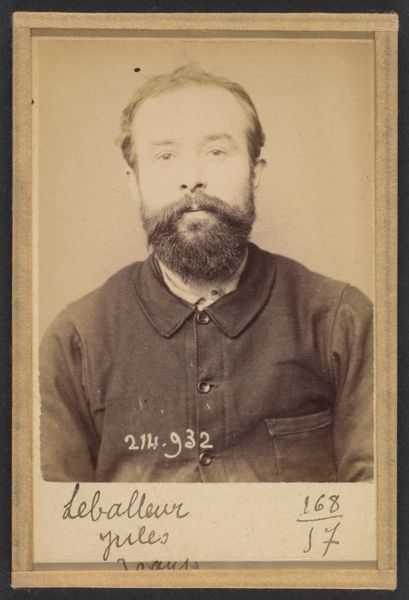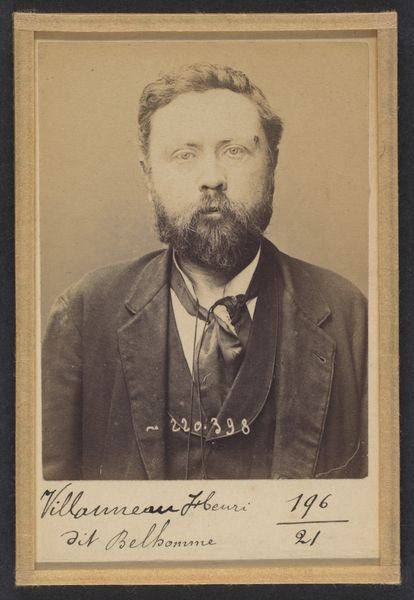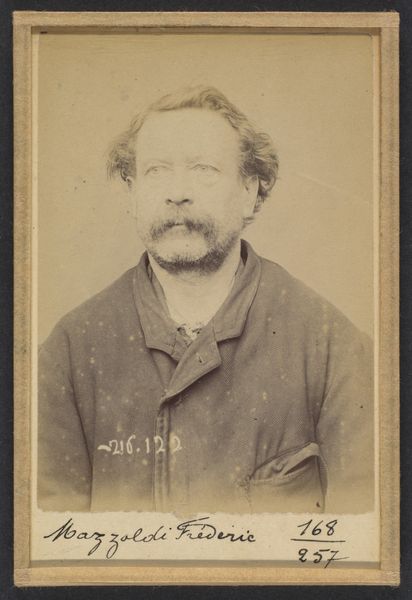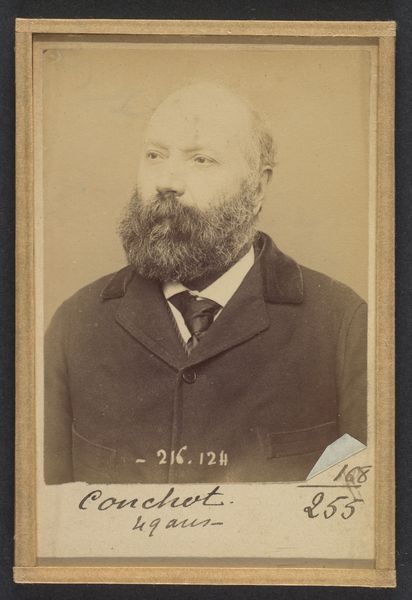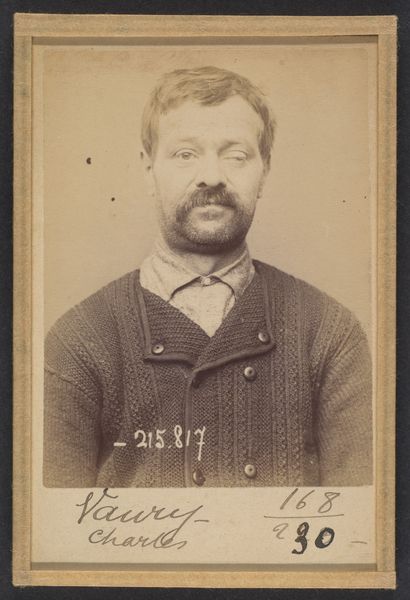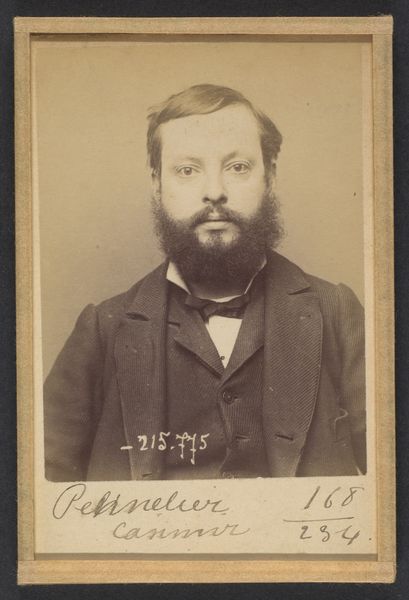
Perrare. Antoine. 53 ans, né à St Diaur (Rhône). Mécanicien. Anarchiste. 10/3/94. 1894
0:00
0:00
photography, gelatin-silver-print
#
portrait
#
photography
#
gelatin-silver-print
#
19th century
#
men
#
ashcan-school
#
history-painting
#
realism
Dimensions: 10.5 x 7 x 0.5 cm (4 1/8 x 2 3/4 x 3/16 in.) each
Copyright: Public Domain
Curator: Well, this gelatin silver print, simply titled "Perrare. Antoine. 53 ans, né à St Diaur (Rhône). Mécanicien. Anarchiste. 10/3/94.," dates back to 1894 and comes to us from the lens of Alphonse Bertillon. It now resides here at the Met. What strikes you about it initially? Editor: Bleak. Utterly bleak. The drab palette, the unsettling expression... It's like peering into the soul of quiet desperation, even with the rough-hewn beard offering a kind of...shield. Curator: The photograph is part of Bertillon’s larger project. He was a French police officer and biometrics researcher who applied anthropometry to law enforcement, creating an identification system based on physical measurements. It's one of the earliest examples of the mugshot. The Ashcan School roots are clearly visible. Editor: A mugshot, huh? That explains the weight of it all. The clinical feel mixed with the subject’s…humanity is jarring. It feels like a violation somehow, reducing a life to mere data. It also reminds me of History Painting--that strive for depicting not just moments, but monumental turns within individual or collective experiences. Curator: Absolutely. The "Bertillonage" system was intended to create a standardized way of identifying criminals. The individual's identity was reduced to a set of measurements and observations. Though designed for purportedly objective identification, its adoption and implementation spoke volumes about social anxieties concerning crime and public order. Editor: But look at the details fighting against that clinical reduction. The way the light catches his unruly hair, the soft fabric of his coat--it’s at odds with the purpose, and it's haunting, isn’t it? What a contrast between intended documentation and captured existence! Curator: Indeed. The photograph highlights the tensions between objective representation and subjective experience. In some ways it is, at once, a social document, a pseudo-scientific record, and a strangely compelling portrait. Editor: Thinking about it, this single image speaks volumes about then and now. It’s not just a face; it’s a commentary on authority, individuality, and the blurry line between the two. It does get me thinking…are we much beyond mugshots even today? Curator: A pertinent point indeed. Food for thought, perhaps, as we move on. Thank you for those insightful observations.
Comments
No comments
Be the first to comment and join the conversation on the ultimate creative platform.
